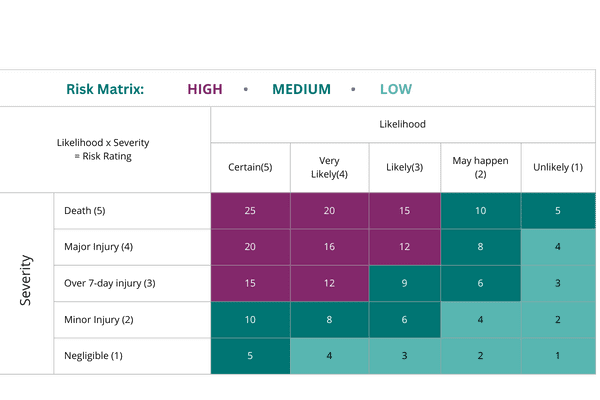Lone Worker Protection series
Module 4: Creating a lone worker risk assessment
Unsure of how to get started with your risk assessment? We’ve got you covered in this video. We explain how a risk assessment works, why it’s important, and the different types you might use depending on the nature of work.
Module resources
Creating a lone worker risk assessment
A risk assessment is a document that helps you measure the likelihood and impact of hazards your team faces at work. It breaks down each hazard by answering questions like who might be harmed, current control measures in place, and what further action is required. A risk matrix then helps give each hazard its own risk rating.
What is a risk matrix?
A risk matrix is a table that scores the likelihood of something happening and its severity. By using this matrix, you can determine the risk rating for each hazard, helping you prioritise where to focus your efforts.

Why is a risk assessment so important?
Proper planning and foresight can literally be a matter of life and death. Under the Health & Safety Act of 1974, which we talked about in our previous video, employers are responsible for their employees’ safety. Negligence or lack of proper training and supervision can lead to severe consequences.
Here’s an example. In January 2023, two firms in Birmingham faced fines and penalties after a worker was tragically killed due to inadequate safety measures. Inexperienced and vulnerable workers were exposed to dangerous conditions without proper planning or risk assessments.
And unfortunately, stories such as these are all too common, which is why it’s so important not to overlook this process.
Who should have a risk assessment in place?
Anyone working in high-risk environments or performing hazardous tasks needs a risk assessment. But even in seemingly low-risk settings, like commuting or dealing with the public there are still potential risks to consider. And especially for lone workers, these risks can be heightened.
There different types of risk assessments depending on the nature of the work. For instance, a construction worker might require assessments for manual handling and working at heights.
For lone workers, you can incorporate a lone working risk assessment into an overall one. Check out our blog where we offer guidance on how to do this.
A dynamic risk assessment is continuously reviewed and updated based on worker feedback and emerging risks. It’s particularly important for high-risk environments and lone workers.
How to create a risk assessment
After identifying hazards and answering the assessment’s questions, you need to implement the measures you identified and record your findings. Questions to answer include:
- Who might be harmed
- Current control measures
- Risk rating
- Further action required
- Person responsible
- Action
- Deadline
- Completed
Visit our risk assessment templates in the resource section above, which features five risk profiles identified by the HSE, including lone working, to get an idea of how to lay out a risk assessment.
Regular communication with your team is vital for identifying hazards, reviewing effectiveness, and clarifying responsibilities.
A risk assessment should be completed before any hazardous task or project. Regular reviews throughout the year can help identify gaps, and it’s crucial to conduct a review after any incidents or accidents to learn and improve.
